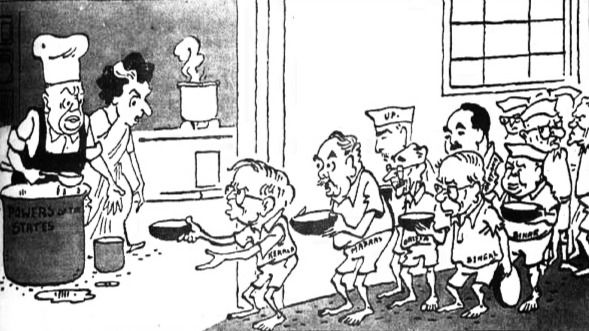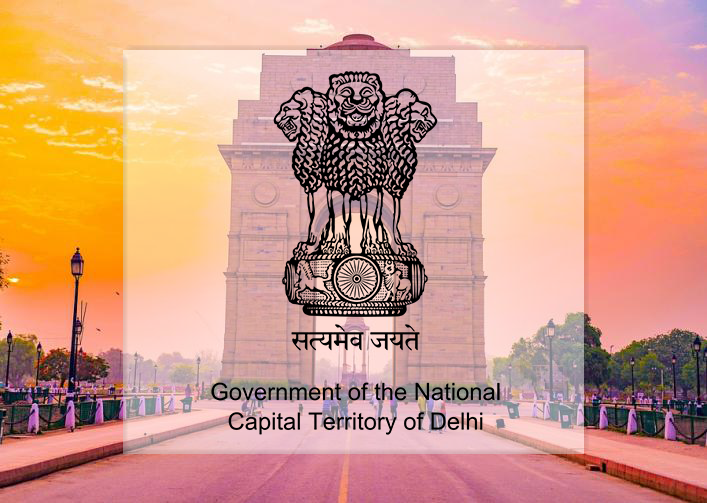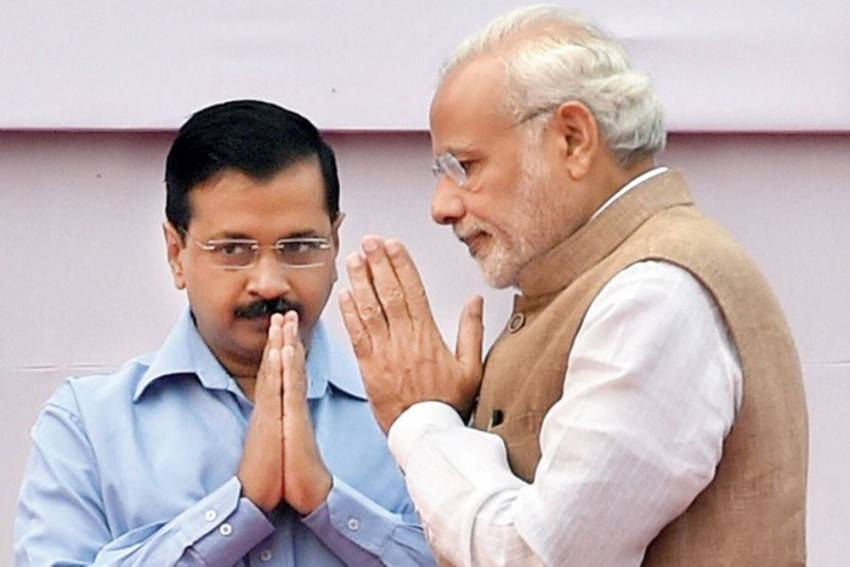Indian Federalism and the Banal Politics of the GNCTD (Amendment) Act, 2021
- Aftar Ahmed
- Jun 17, 2021
- 9 min read
Guest Opinion
Introduction
India is a multicultural and multifaceted country with innumerable asymmetries abound. The Indian experience is fundamentally couched in the practices of diversity. India was amongst the first few democracies to embark on a multicultural path when the West still insisted on adopting a difference-blind approach and value neutrality. Diverse are its people, languages, cultures, religions, and belief systems. The India that was bestowed upon us fought valiantly against the homogenizing tendencies of its colonial masters and the ethnonationalist sentiments of its indigenous nationalists. It mandated a new path by recognizing its minorities, rather than turning a blind eye to them.
The Indian nation state emerged as a glistening diamond forged under the fiery pressures of accommodation and assimilation. It can thus be called a motley package of diversities that have together rendered it a unique identity and conditioned its performance as a democracy. Packaged within the acceptance of diversity, often came threats of differentiation underlined by secessionist underpinnings and attempts to break away from the huge patchwork quilt.
The pages of our history celebrate the iconic efforts of Sardar Patel to weave together a patchwork quilt of states through deliberations and negotiations. The underpinnings of diversity also manifest themselves into the procedures of integration of states, with each state striking a different deal with the national government.
Federalism
Article 1 of the Indian constitution defines that ‘India, that is Bharat, shall be a Union Of States.’ This highlights the unique concept of federalism that India incorporated into its Constitution and everyday statecraft. In simpler words, ‘Federalism’ refers to ‘a form of political organization wherein distribution of power is at two levels – mostly the national and the regional level.’ Taking instruction from this, political scientists further classify governments into Federal as opposed to Unitary models.
A definitional endeavour suggests that a Unitary government is one in which all powers are vested in the national government, and the regional governments ( if they exist at all) derive their authority from the national government. In a federal government, the division of powers between the national and regional governments is sanctioned by the Constitution, and both operate independently in their respective jurisdictions.
The Constitution of India established one such federal system of government. India contains all the usual features of a federation i.e. two governments, division of powers, written constitution, supremacy of constitution, bicameralism, and independent judiciary . However, the Indian case also encapsulates examples of unitary non-federal characteristics such as a strong centre, single constitution, single citizenship, integrated judiciary, appointment of state governor by centre, All India Services, and the emergency provisions.

Kutty employs a Dickensian staple (The orphan Oliver asking for more soup) as subtle metaphor for Centre-state relations/Image Credits: Outlook India
Surprisingly, the term Federation features nowhere in the Constitution. Thus, often the Indian system has been variously described as ‘federal in form but unitary in spirit’. K.C Wheare (1946) refers to the Indian case as ‘Quasi-Federal’ and Morris Jones (1960) refers to it as ‘Bargaining Federalism’. Granville Austin (1966) calls the Indian case as ‘Federation with a centralizing tendency.’
Asymmetrical Federalism– The Indian Experience
The Indian experience of federalism has been unique. Its diversity has validated India’s practice of Asymmetrical federalism. Simply put, ‘Asymmetrical Federalism’ refers to ‘a flexible type of union’ that grants special status to some federative units in the Constitution. Circumscribing the Indian experience is a great deal of ambivalence in this regard . Many modern postcolonial nationalists expressed their scepticism against any asymmetrical constitutional arrangements for they believed that it bore within it the seeds of separatism. Illustrative are the cases of Pakistan and Sri Lanka who almost totally rejected the federal ideals despite their ethno-national diversities. India and Nepal were the only two reluctant postcolonial federalists.
Ronald Watts (2008) brought about an interesting theoretical distinction between the political asymmetry that characterizes every federation based on the geographical and demographic sizes of units, and the Constitutional Asymmetry which pertains to the differences in status or differences in legislative and executive capacities, legitimized by the Constitution, to the different regional units. Constitutional Asymmetry had been manifest in the Special Status provided to the state of Jammu and Kashmir (abrogated recently) and that of Nagaland and Mizoram, at the state level.
However, constitutionally mandated asymmetries also percolate to sub-state levels. This encompasses the experience of special kinds of federating units referred to as Union Territories. Initially administered directly by the Union through centrally appointed administrators, none possessed legislatures but were still represented by at least one seat in the lower house of the Parliament – the Lok Sabha. Subsequently, two new Union Territories came to be created, namely Pondicherry by the virtue of the 14th Amendment Act in 1962, and Delhi by the virtue of the 69th Amendment Act in 1991.
A point of convergence in these two cases has been the grant of unicameral legislatures, membered by directly elected representatives. The legislatures are led responsibly by a Council of Ministers and headed by the Lieutenant Governor, an appointee of the Union Government, who performs the formal executive functions of the government. Both the territories are led by Chief Ministers accountable to their respective legislatures. However, the Chief Minister of Delhi is appointed by the President of India on the recommendation of the Lieutenant Governor (LG).
This is on account of the fact that Delhi is the National Capital Territory (NCT). Delhi Legislature enjoys only concurrent jurisdiction particularly in the context of conflicts that may emerge on questions of laws made by it and those made by the Parliament. In such situations, the laws of the latter are given precedence.
Delhi can be viewed as a semi state in that some of its vital subjects of land, police, and civil services are vested in the hands of the Union Government. The Government of Delhi enjoys only concurrent jurisdiction in other subjects. This has given impetus to the demands for full statehood for Delhi. It is in this context that the GNCTD Bill becomes an important focal point .
The GNCTD
The Government of Delhi or the Government of the National Capital Territory of Delhi (GNCTD) governs the Union Territory of Delhi. The Chief Minister and the Lieutenant Governor are the heads of the Government. It comprises a Legislative Assembly which is unicameral in its nature and is membered by 70 members.

Image Credits: India Blooms
The Legislative Assembly of Delhi was first constituted on 17th March, 1952, on account of the Part-C States Act, 1951 . However, this was abolished on 1st October 1956. A move for re-establishment followed in 1993 after the advent of the 69th Constitutional Amendment Act, 1951 that declared the Union Territory of Delhi to be formally recognized as National Capital Territory of Delhi.
Delhi’s identity is circumscribed by a complex power structure owing to its status as the National Capital where jurisdiction over different subjects is split between the Central Government and the Delhi Government, largely determined by Article 239 AA, the GNCTD Act of 1991 and the Transaction of Business Rules 1993.
The 2018 Supreme Court Judgement
Post an interlude of two years since 2016, a five-member Constitutional bench of the Supreme Court was constituted in 2018. This was in light of a tussle between the Governor and the elected Government of Delhi as manifest in the Government of NCT of Delhi and Ors .vs Union of India case ( 2018 ). A repository of principles of rule of law, participatory democracy, and collaborative federalism, the judgement upheld the 69th Constitutional Amendment of 1991 by overturning the erroneous 2016 judgement of the Delhi High Court which had levitated in favour of the Governor. The single judge bench led by Justice G Rohini had ruled in 2016 that the LG was the administrative head of NCTD, and therefore was not required to act on the ‘aid and advise’ of the Council Of Ministers even in areas exclusively under the jurisdiction of the elected Government.
This was followed by a restorative attempt by the Five-judged constitutional bench with regard to Article 239AA; it was emphasized that the LG had no independent powers to his avail and that he has to conform to the ‘aid and advise’ of the Council of Ministers. The bench had said that, “a legislative assembly without law-making powers will nullify the very idea of representative democracy that represents ‘the popular will’ ”.
Justice Dipak Mishra, reminiscing Thomas Jefferson, articulated that a just government should derive its power from the consent of the governed . Arguments in favour of ‘Constitutional Morality’ dominated the extensive piece of judgement , supplemented with the ideas of ‘Constitutional objectivity’ as manifesting the idea of checks and balances , separating the operational arenas of the legislature and the executive, functioning within the broader framework of denying absolute power to one functionary over the other.
The LG was assumed to be just an “administrator” in a limited sense of the term, who was bound by the aid and advice of the Council Of Ministers, and possessed no independent powers of his own. He could not interfere in every case, and his concurrence was not required in each matter . The CJI held that as per 239 AA ‘any matter did not mean every matter’ . The LG was to employ ‘constitutional objectivity’ and exercise his power only in ‘rarest of rare situations’ but only for valid reasons.
GNCTD (Amendment) Act, 2021

Image Credits: Law Insider
The year of the Coronavirus pandemic witnessed an unprecedented piece of legislation declaring that ‘the Government referred in any law to be made by the Delhi Legislative Assembly shall henceforth mean the Lieutenant Governor .’ This provision insinuated that the titular head and the Centrally nominated administrator, the Lieutenant Governor, and not the elected representatives or the Executive, would constitute the Government of NCT of Delhi. The GNCTD (Amendment) Act, 2021 came to be passed by the Lok Sabha on March 22nd, 2021 and subsequently by the Rajya Sabha on March 24th, 2021 followed by a Presidential assent on 28th March, 2021, thereby amending sections 21, 24, 33 and 44 of the Act.
An analysis of this stands crucial, particularly in light of the fact that the Shri Narendra Modi led Bharatiya Janata Party (enjoying a majority in the Parliament) has lost three consecutive assembly polls in Delhi to the Shri Arvind Kejriwal led Aam Aadmi Party. While the BJP vehemently denies any ulterior motives and validates the amendment on grounds of seeking to clarify the ambiguities of Article 239 AA, lay observers regard this as nothing but a rhetorical assertion on part of the central government. The Centre stands firm in its belief that the amended 2021 Act was necessary for proper implementation of the 2018 SC Judgement.

Image Credits: Outlook India
Veterans opine that the LG is the Centre’s nominee and not a part of the elected government, and that the GNCTD (Amendment) Act of 2021 subverts the 2018 Judgement which extrapolated that the Constitution has mandated a federal balance which prevents the Union from usurping all powers and lets the States enjoy freedom without any unwarranted interference from the Central Government.
The GNCTD (Amendment) Act 2021 has also been notorious in its retrospective postulation that ‘The Delhi Legislative Assembly shall not make any rules to enable itself or its Committees to consider the matters of the day-to-day administration of the Capital or conduct inquiries about the administrative decisions , and any of the rule made in contravention of this proviso, before the commencement of the GNCTD (Amendment) Act, 2021 shall be void.’
Inherently problematic is this clause which prevents the democratically elected Legislative Assembly from constituting any oversight committees for Delhi’s administration. Implied within this is the contentious provision that Delhi Assembly would not be able to formulate committees to scrutinize actions, laws etc., contrary to the very spirit of democratic governance. Emergent is an existential crisis of sorts questioning the very foundational viability of representativeness imbibed in the Indian Constitution.
The Act also articulated that ‘Before taking any Executive action in pursuance of the decision of the Council of Ministers or a Minister, to exercise powers of Government, the opinion of the L-G shall be obtained on all such matters by a general or special order by the L-G.’ What this implies is that while the Act provides that the opinion of the Governor must be sought, in practice the Act inhabits the latent potentialities to push for acquiring concurrence on all matters from the Governor instead. This sabotages the earlier Supreme Court Judgement which categorically postulated that the concurrence of the LG is not required.
The Act also mars the everyday functioning of the Legislature, cumbering it with unnecessary delays in decision making which will prove costly in situations of health emergencies like the operant Coronavirus Pandemic. LG’s prior opinion on ‘any executive matter’, so to say, induces unnecessary complexities in the governance model, which is the selling point of any party that holds a majority in the Legislature. A roadblock of this sort only emerges as a quagmire to pull down the current AAP administration in Delhi.
Conclusion
The sui generis nature of the Government of National Capital Territory of Delhi stands to be threatened by such instruments of banal politics. The Central Government suffers from chronic myopia which motivates it to legislate for the day, without being perceptive of the repercussions that such legislations may entail in the long run. This is to be contextualised with its previous legislations of abolishing Article 370 , the CAA and NRC conundrum, and the very much alive dispute over the Farm Laws. There is a reason why the Bharatiya Janata Party has failed to capture both the throne and the hearts of the people of Delhi. Such incognisance may turn out to be expensive in the future wherein the ruling party, in its frantic bid to homogenise power in its own hands, seeks to offer a disappointing apologia to the tenets of constitutionally christened federalism. Thus, it needs to transcend from its vanity metrics.
In hindsight, post the abrogation of Article 370, CM Arvind Kejriwal welcomed Centre’s authoritarian decision appeasing the majority, unanticipating the fact that one day, the Centre would also stand at the door of the Delhi Government with an eviction notice.
A vibrant democracy cultivates a mosaic of opinions. Homogenisation poses a great danger of stagnation, tethering India by the pegs of dogmatism. Every action has an equal and opposite reaction: The banality of such politics as witnessed in the GNCTD Act of 2021 may stimulate stronger reactions, and demands for greater democracy, the thirst for which may be difficult to quell by mere rhetoric.
By Jahnobi Khanna
Email: jahnobikhanna@gmail.com
Jahnobi is a Masters student in the Department of Political Science at the Delhi University. She likes to read feminist literature and has a keen, critical eye. She also likes to question everyday realities, visible to the naked eye and beyond. Works of Ismat Chughtai are her shelter, and she wishes to be the Kintsugi artist of the world around her.
Comments